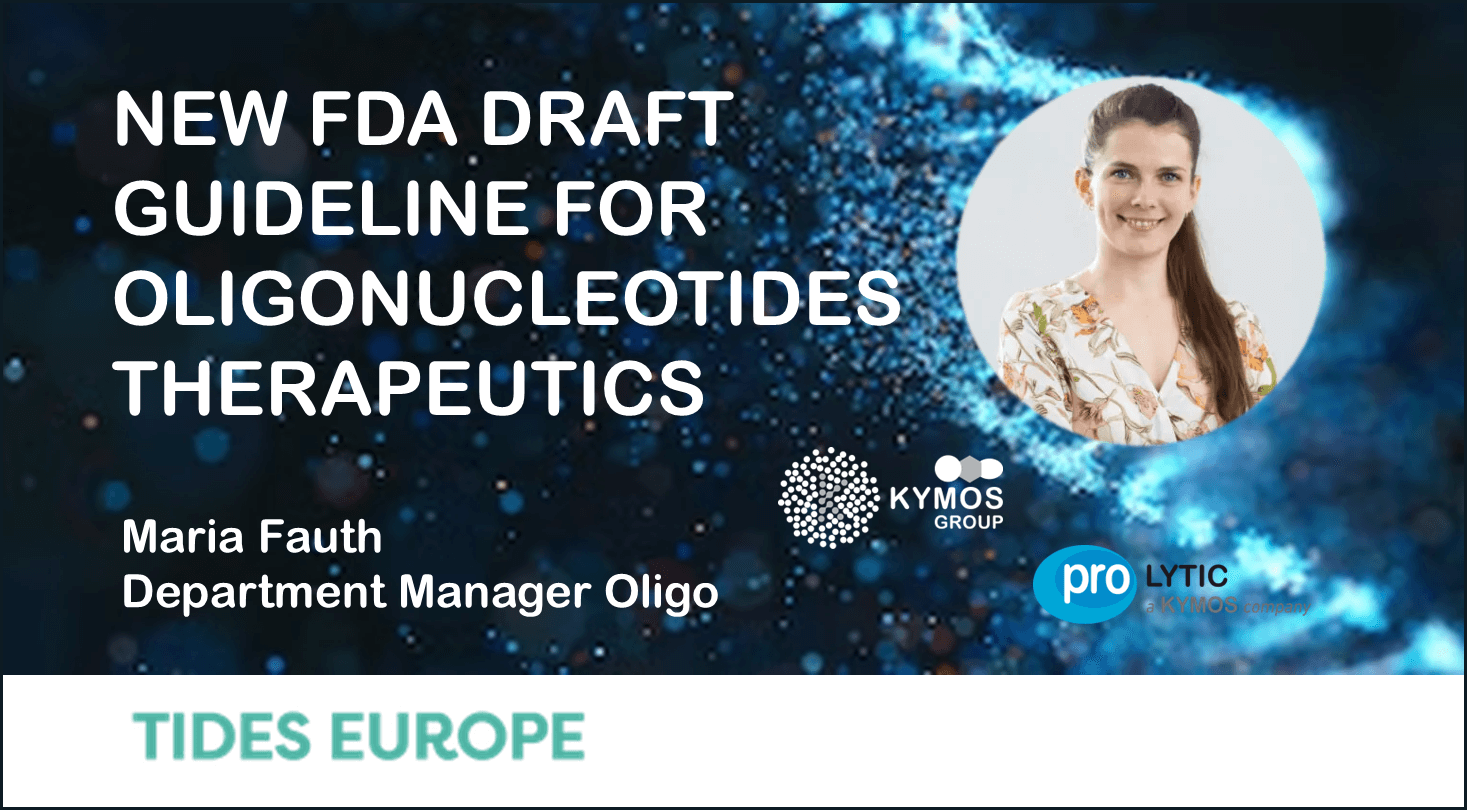
In June 2022 the FDA published a draft version of a new guideline about “Clinical Pharmacology Considerations for the Development of Oligonucleotide Therapeutics”. The guideline provides recommendations to assist the industry in the development of oligonucleotide therapeutics. This poses new challenges for oligonucleotide therapeutics developers and manufacturers. Maria Fauth, Department Manager Oligonucleotides at Kymos, explains what the new guideline is about and how Kymos can support you in implementing it.
“The new FDA draft guideline focuses on recommendations for pharmacokinetic, pharmacodynamic, and safety assessments during oligonucleotide therapeutic development. We at Kymos, can provide support to our clients in all these activities” Maria Fauth starts with a first overview.
The development of an oligonucleotide therapeutic follows in many ways the drug development of small molecules or biologics. Nevertheless, oligonucleotide therapeutics have certain unique characteristics compared to small molecule or biological products that need to be considered. For example, the oligo therapeutics plasma pharmacokinetics might not reflect the target tissue distribution, pharmacodynamics, safety, or efficacy.
Maria Fauth outlines how Kymos can make your live easier at this stage of development: “First we can we determine the plasma concentrations of the oligo therapeutic agent using hybridisation ELISA or LC-MS/MS with bioanalytical methods according to GLP. Then we perform the pharmacokinetic evaluation with our validated WinNonLin software. In case the plasma pharmacokinetics is not sufficient, we at Kymos can also quantify the required pharmacodynamic biomarkers quickly and easily using our state of the art ECLA system.”
Actually, the whole journey started with exactly this biomarker determination.
“We recognised the need for reproducible bioanalytical methods years ago. And acted on it” explains Maria Fauth. “Already 2017 we started to develop and validate GLP-compliant bioanalytical methods for biomarker miRNAs by means of qPCR in different tissues and biofluids. In the years since, we have expanded our spectrum to include the other nucleic acids and application areas. Now we feel ourselves confirmed, since the FDA explicitly points out the necessity of validated bioanalytical methods in this new guideline.”
However, the FDA is taking it a step further. In the new draft guideline, they emphasize that new chemical modifications and other oligonucleotide therapeutics can provoke adverse immune responses. Therefore, immunoassays of the oligonucleotides but especially of the carrier components and the oligonucleotide conjugates to protein targeting ligands are essential.
Responding to the FDA recommendation Maria Fauth gives a brief overview of Kymos’ broad experience with immunogenicity.
“We have two sites, one in Barcelona and one in Frankfurt, dedicated to immunogenicity determination. My very experienced colleagues are prepared to assist you with any immunogenicity problem that might arise in your development.”
In conclusion the whole team at Kymos would be happy to consult you on the implementation of the guideline and support you in your development of your oligonucleotide therapeutics. For more information contact us at commercial@kymos.com. You can also meet Maria Fauth in person at TIDES, 16-18 November in Vienna, Austria.
For your convenience you can find the complete guideline here.

